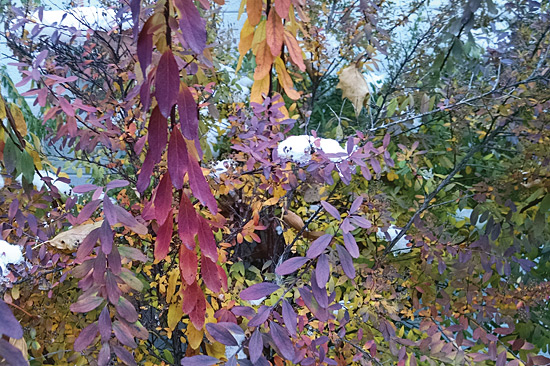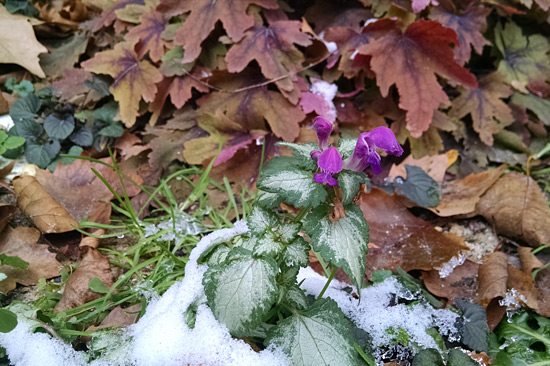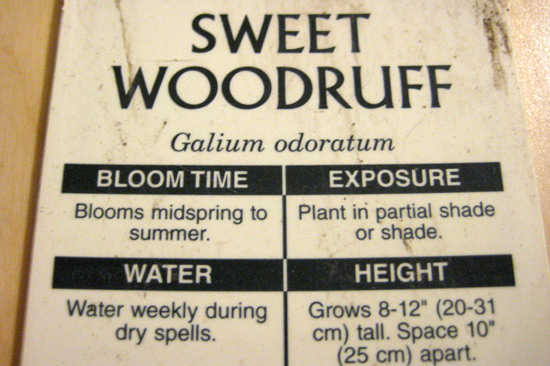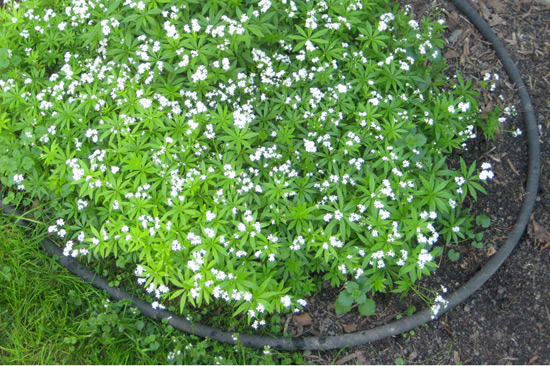Today is the 15th of the month, so it’s time for a Bloom Day post. Each month, garden bloggers who participate take snapshots of what is blooming in their gardens. Then we all dash over to May Dreams Gardens to take virtual strolls through gardens from around the world. You may want to head over there right now because the following Bloom Day post is not for the faint of heart.
The Lot is situated in Zone 6a, so blooms in the garden are rare at this time in the year. If we’re lucky, we have pretty snow standing in for long ago spent blooms. In our growing zone, the idea of “winter interest” in the garden is a feature we may or may not pull off during the winter depending on the weather.
Take the start of this winter for example. We had our first snowstorm in November, burying the city in a short amount of time and as a result causing a bit of a scramble. On the Lot, plants I leave standing in the garden to help with winter interest were flattened. By the end of the month, temperatures warmed enough to make the snow heavy and sloppy before finally melting. Temperatures plummeted again and we’re left to look at a frozen and gray mess. Here is this month’s Bloom (or lack thereof) post for December.
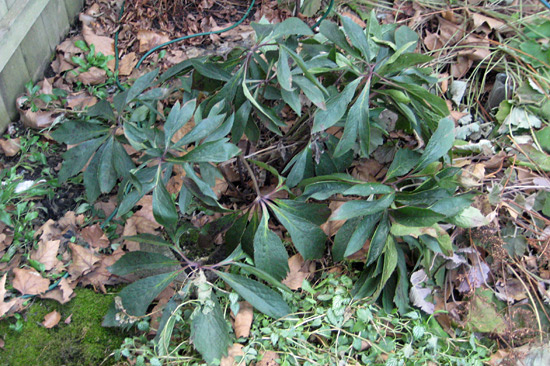 Hellebore with some broken stems. It does keep its color though because of being semi-evergreen.
Hellebore with some broken stems. It does keep its color though because of being semi-evergreen.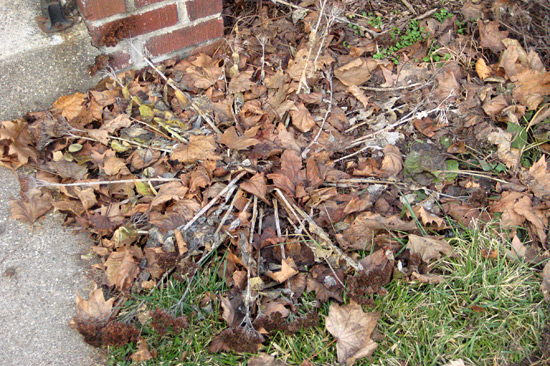 The little sedum out front usually have a cotton top of snow on the ends of their upright stems. No so much here.
The little sedum out front usually have a cotton top of snow on the ends of their upright stems. No so much here.
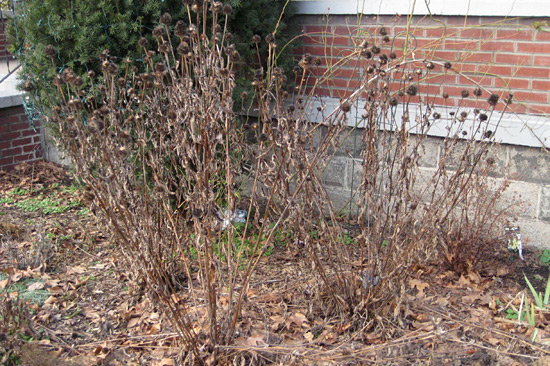 The coneflowers straggly stalks are usually surrounded by snow.
The coneflowers straggly stalks are usually surrounded by snow.
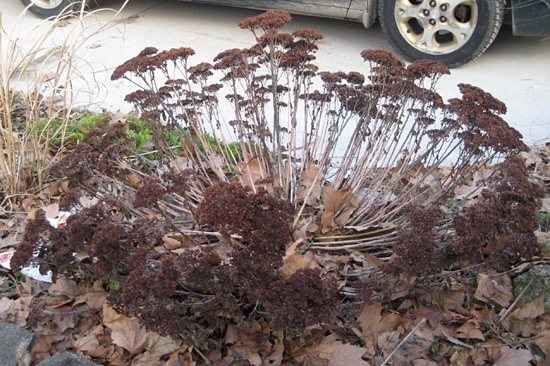 Here’s another sedum, Autumn Joy. This one was stronger than the plants out front on the South side of the house.
Here’s another sedum, Autumn Joy. This one was stronger than the plants out front on the South side of the house.
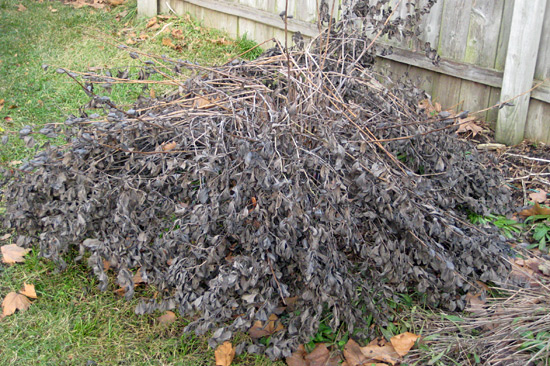 Ugh, this poor Baptisia… SPLAT.
Ugh, this poor Baptisia… SPLAT.
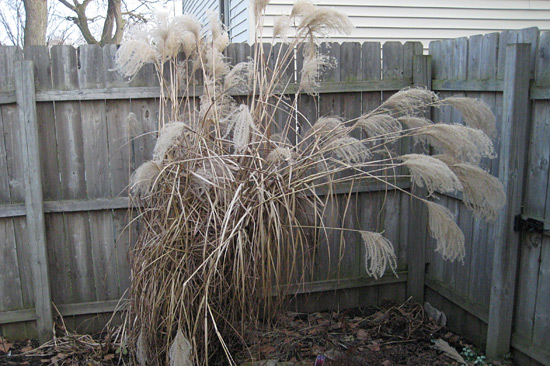 And here is the maiden hair grass which I’ve had to tie together to even keep upright.
And here is the maiden hair grass which I’ve had to tie together to even keep upright.
So, no blooms really to report, but weather events to log. This is a great time to catch up on the garden blog and maybe break out a knitting project or two.
